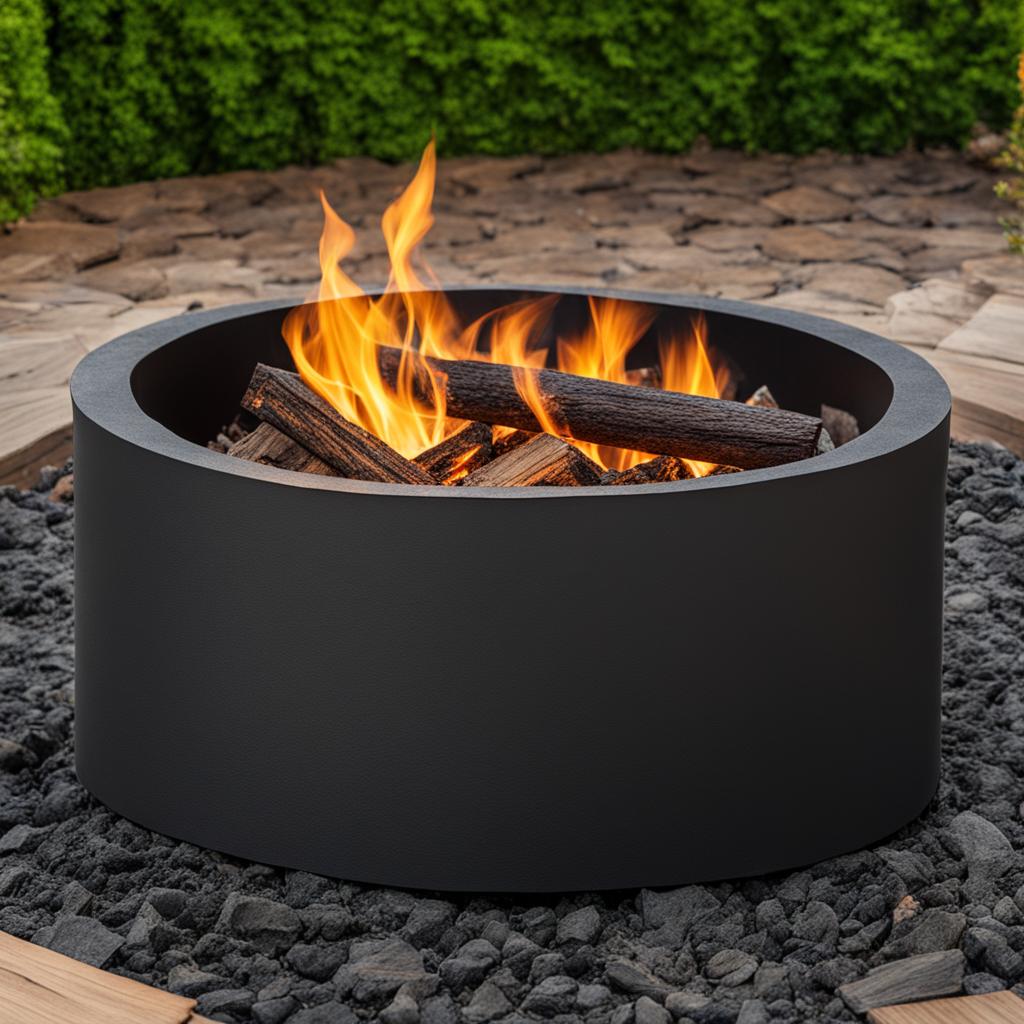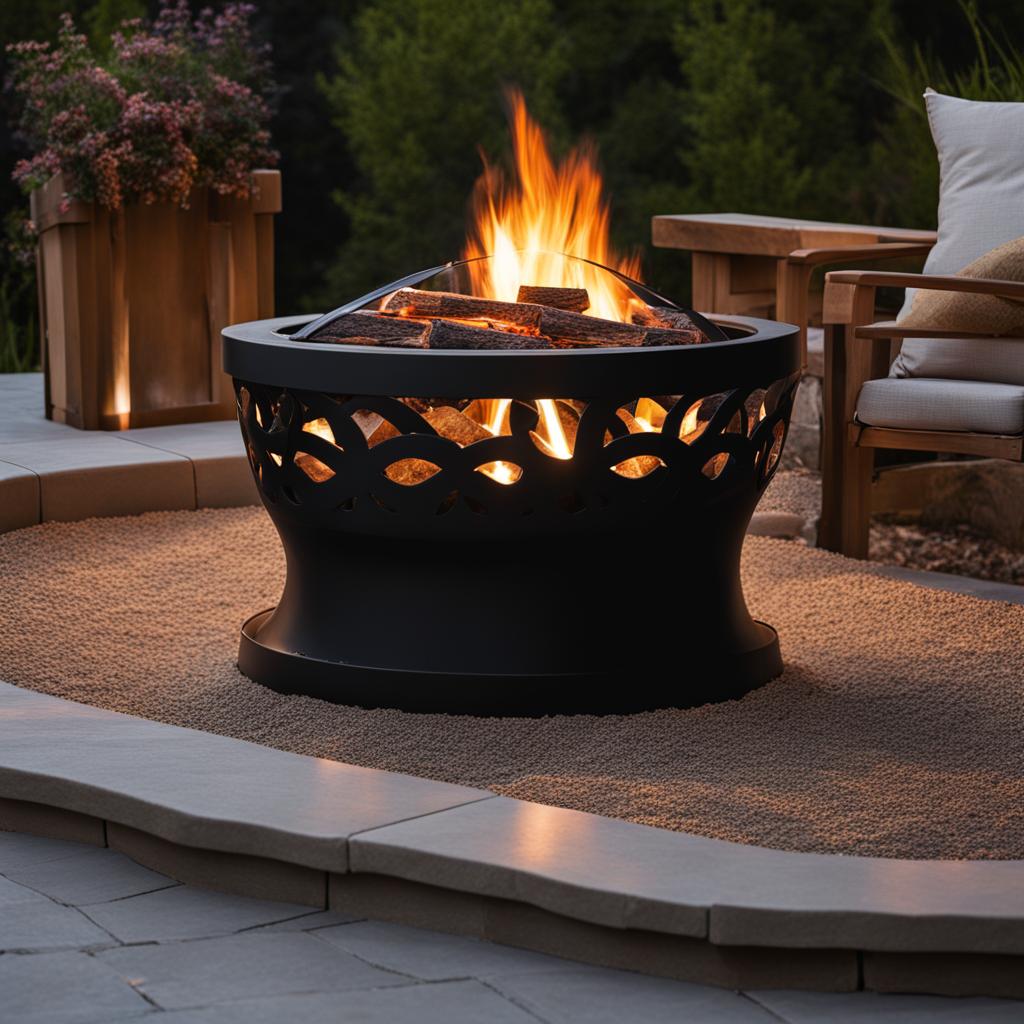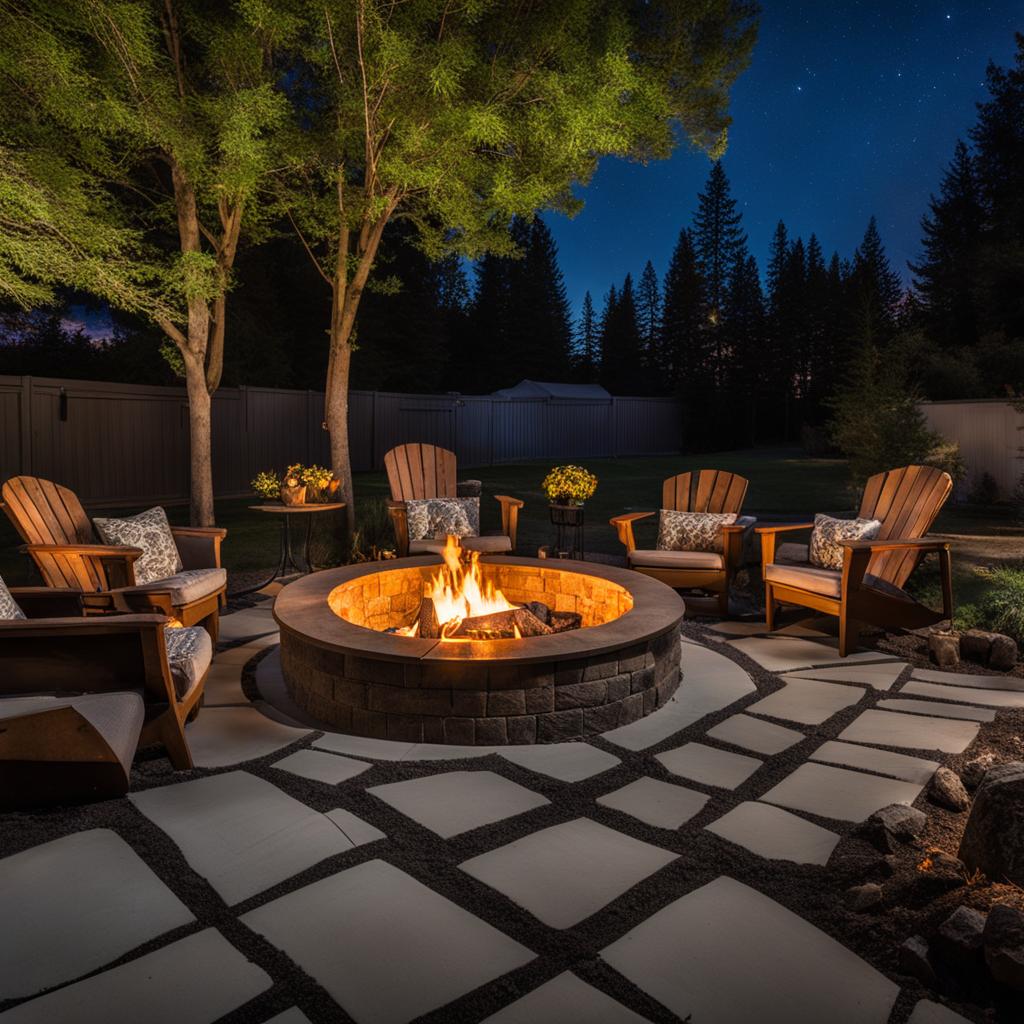Learn How Long Do You Wait to Cover Firepit – Quick & Safe Tips

Table of Contents
Properly maintaining your fire pit is essential to extend its lifespan and protect it from the elements. One crucial aspect of fire pit maintenance is knowing when and how long to cover it. By understanding the timing and benefits of using a fire pit cover, you can ensure its longevity and enjoy a hassle-free experience.
Key Takeaways:
- Regularly covering your fire pit prevents damage from weather conditions and extends its lifespan.
- Moisture can cause costly repairs in gas-powered fire pits, while rust may affect metal fire pits.
- Stone fire pits can accumulate dirt and algae if not covered, requiring additional cleaning.
- Choose a cover that suits your fire pit type and local weather conditions for optimal protection.
- Properly extinguish the fire pit by letting it burn down completely before covering with sand or dirt.
Do Fire Pits Need Covers?
Yes, it is essential to cover fire pits when not in use. Using a fire pit cover offers several benefits for proper fire pit care and maintenance. Firstly, a cover extends the life of the fire pit by protecting it from the elements. Whether your fire pit is made of gas, metal, or stone, exposure to rain, snow, and other weather conditions can cause damage. A cover prevents moisture from seeping into gas-powered fire pits, which can lead to costly repairs or replacements.
Secondly, covering your fire pit saves you cleaning time. Without a cover, debris like leaves, twigs, and dirt can accumulate inside the fire pit, making it more challenging to clean. By keeping the fire pit covered when not in use, you significantly reduce the need for extensive cleaning before every use.
Lastly, a fire pit cover offers protection during the winter months when the fire pit may not be in use. Winter weather can be particularly harsh, causing additional wear and tear on the fire pit. By keeping it covered, you can prevent snow, ice, and freezing temperatures from causing damage.
Proper Fire Pit Care
Proper care and maintenance of a fire pit are crucial for ensuring its longevity and performance. Along with using a cover, there are other steps you can take to care for your fire pit:
- Regularly clean out any debris, ash, and wood remnants from the fire pit to prevent buildup.
- For metal fire pits, use mild dish soap and hot water to clean the surface and remove rust.
- For stone fire pits, mix water and hydrochloric acid to clean both the interior and exterior of the pit.
- When storing the fire pit cover, make sure it is completely dry to avoid mold or mildew growth.
By following these proper care guidelines and using a fire pit cover, you can protect your fire pit and enjoy its warmth and ambiance for years to come.
Choosing the Right Fire Pit Cover
When it comes to selecting a fire pit cover, there are several factors to consider to ensure the optimal protection and longevity of your fire pit. The type of fire pit, local weather conditions, and personal preferences all play a role in determining the right cover for your needs.
Firstly, consider the type of fire pit you have. Gas fire pits, metal fire pits, and stone fire pits each have unique requirements. Gas fire pits may benefit from metal screens that offer protection from sparks. Metal fire pits may require metal snuffer lids that cut off airflow to safely extinguish the fire. Stone fire pits, on the other hand, may be best suited for lightweight fabric covers that are easy to store and come in various materials and colors.
Secondly, take into account the local weather conditions. If you live in an area with frequent rain or snow, you’ll want a cover that is waterproof and can withstand the elements. Look for covers made from durable materials and ensure they have proper sealing mechanisms to keep out moisture. Additionally, consider the size and shape of your fire pit to ensure a snug fit and maximum coverage.
Factors to Consider:
- Type of fire pit (gas, metal, or stone)
- Local weather conditions
- Size and shape of the fire pit
Lastly, consider your personal preferences. Do you prefer a sleek and modern look or a more rustic feel? There are covers available in various styles and designs to match your aesthetic. Additionally, think about the ease of use and storage. Some covers come with drawstrings or straps for secure fastening, while others are lightweight and foldable for convenient storage.
By taking these factors into consideration, you can choose the right fire pit cover that not only provides adequate protection but also complements your outdoor space. Whether you have a gas, metal, or stone fire pit, a well-chosen cover will help preserve its beauty and functionality for years to come.
Best Practices for Fire Pit Cover Usage
Properly using and caring for your fire pit cover is essential to ensure its effectiveness and longevity. By following some best practices, you can keep your fire pit protected and maintain its functionality for years to come.
Regular Cleaning and Maintenance
Before covering your fire pit, it’s important to clean out any debris such as ashes, wood remnants, and leaves. For stone fire pits, a mixture of water and hydrochloric acid can be used to clean both the interior and exterior surfaces. Metal fire pits can be cleaned with mild dish soap and hot water. Make sure the fire pit is completely dry before placing the cover to prevent mold or rust formation.
Proper Cover Placement
When placing the cover on your fire pit, ensure it fits securely and covers the entire surface. Some covers may have drawstrings or straps that can be used to fasten them in place. This will prevent the cover from being blown off by strong winds or heavy rain. A tightly secured cover will also keep out debris, insects, and other elements that could potentially damage your fire pit.
Regular Cover Care and Storage
To keep your fire pit cover in good condition, it’s important to regularly clean and maintain it. Use a rag or soft brush to remove dirt and debris from the cover’s surface. Spot clean with mild soap and water if necessary. Allow the cover to air dry completely before storing it. When not in use, store the cover in a dry and protected place, away from direct sunlight or extreme temperatures, to prevent any damage or deterioration.
By following these best practices for fire pit cover usage, you can ensure the optimal protection and longevity of your fire pit. Regular cleaning, proper placement, and appropriate storage will help maintain the functionality and appearance of your fire pit cover, allowing you to enjoy cozy fires for years to come.
The Importance of Properly Putting Out a Fire Pit
When it comes to fire pit safety, it is crucial to ensure that you properly extinguish your fire pit. Leaving a fire pit unattended, even with only embers remaining, can lead to a potentially dangerous flare-up hours later. To prevent this, it is essential to follow the correct extinguishing methods.
Avoid the temptation to douse the flames with water, as this can cause rapid temperature changes that may damage the metal components of your fire pit. Instead, let the fire burn down completely before adding a layer of sand or dirt to cover the embers. This will smother them and prevent them from continuing to burn.
Remember to never leave a fire pit unattended until you are certain that it is fully extinguished. Even after adding sand or dirt, it is recommended to remove any remaining ash and coal to eliminate any lingering sources of heat. Additionally, spraying the surface of the fire pit with cooking spray can help prevent rusting and protect the longevity of your fire pit.
Follow these simple steps to properly put out your fire pit:
- Allow the fire to burn down completely.
- Add a layer of sand or dirt to cover the embers.
- Remove any remaining ash and coal.
- Optional: Spray the surface of the fire pit with cooking spray to prevent rusting.
By following these fire pit extinguishing methods, you can enjoy a safe and worry-free fire pit experience.
Conclusion
Properly covering a fire pit when not in use is essential for its protection and longevity. Different types of fire pits, such as gas, metal, and stone, have unique needs and requirements for covers. Choosing the right cover material and considering local weather conditions are critical factors.
Following best practices for cleaning, storage, and usage of a fire pit cover will ensure its effectiveness and durability. Take the time to clean out any debris before covering the fire pit, using appropriate cleaning solutions for different material types. Securely fasten the cover to prevent any elements from entering the pit.
Additionally, properly putting out a fire pit using sand or dirt will prevent potential flare-ups and damage. Avoid using water, as it can harm the metal and cause rapid temperature changes. By following these tips, you can enjoy a safe and long-lasting fire pit experience.
FAQ
How long should I wait to cover my fire pit after use?
It is recommended to wait until the fire pit and the ashes have cooled down completely before covering it. This usually takes a few hours, but it is safest to wait overnight to ensure there are no remaining embers.
What are the benefits of covering a fire pit?
Covering a fire pit when not in use helps to extend its longevity by protecting it from the elements. It also saves cleaning time by preventing debris, water, and other elements from filling the inside of the fire pit.
How do I choose the right fire pit cover?
When choosing a fire pit cover, consider the type of fire pit (gas, metal, or stone), local weather conditions, and personal preferences. There are different types of covers available, including metal screens, metal snuffer lids, and fabric covers. Each has its own advantages and disadvantages, so choose the one that suits your needs best.
How should I care for and store my fire pit cover?
To care for your fire pit cover, clean it regularly by removing dirt and debris with a rag or soft brush. Spot clean if necessary and let it dry before placing it back on the fire pit. Store the cover in a clean, dry area when not in use to prevent damage. Proper care and storage will ensure the cover’s longevity.
How do I properly extinguish a fire pit?
To safely extinguish a fire pit, let the fire burn down completely. Once the fire has died down, add sand or dirt to cover the embers. This will smother the embers and prevent them from burning longer. Avoid using water to extinguish the flames, as it can damage the fire pit, especially if it is made of metal.
Why is it important to cover a fire pit?
Properly covering a fire pit when not in use is essential for its protection and longevity. Different types of fire pits, such as gas, metal, and stone, have unique needs and requirements for covers. Using a cover helps to prevent weather-related damage, rusting (for metal fire pits), and accumulation of dirt and algae (for stone fire pits).
Share:
More Posts



